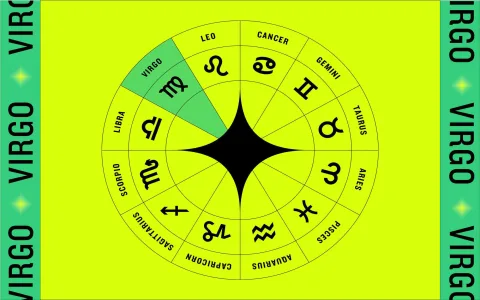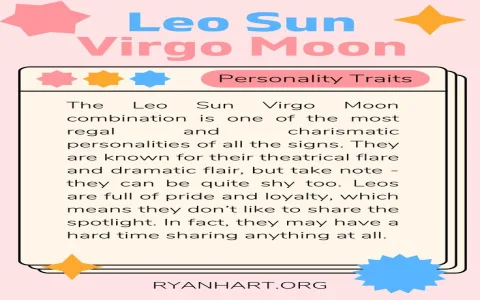Man, I had to figure this out. I seriously had to. For the longest time, I thought I was losing my mind, just completely inadequate at my job, and frankly, kind of stupid. Why? Because I started collaborating with this new project manager, a total powerhouse, incredibly efficient, but every single thing I submitted—and I mean everything—came back with red marks. The critique wasn’t just feedback; it felt like a personal attack wrapped in an efficiency report. She was a textbook Virgo woman, born right at the cusp.
I battled this for about two months. Every time we had a review meeting, I’d leave feeling flattened, convinced I needed to quit and become a shepherd or something equally low-stakes. But I needed this contract, so quitting wasn’t an option. I realized I couldn’t change her behavior, but I damn sure could change how I processed it. I needed to crack the code on this specific brand of relentless perfectionism. I needed to know: was she trying to destroy me, or was she just built this way?
Phase 1: Initiating the Deep Dive and Data Gathering
My first step wasn’t pulling up some fluffy cosmic website; I needed real operational data. I reached out to my network—people who had successfully worked under extremely demanding bosses, or who were married to Virgos. I scoured professional forums where people vented about hyper-critical colleagues. I wanted anecdotes, war stories, not just sun signs. I collected over fifty examples of feedback styles, relationship issues, and management techniques tied to this sign.
What I observed quickly was a pattern: the criticism wasn’t random malice; it was structural. It was about perceived flaws in the system, the grammar, the efficiency, the lack of a proper backup plan. It wasn’t about me, the person. This distinction was key, but translating it into usable traits took work.
Phase 2: Synthesizing the Essential Traits
I took all those raw, often angry data points, and separated them into two columns: the traits that were undeniably useful (the ‘Good’ stuff that actually improved the product) and the traits that just drove everyone nuts (the ‘Bad’ stuff that caused burnout and resentment). I synthesized the common themes, trying to strip away the emotional reaction and get to the root mechanism.
The goal wasn’t just understanding; it was creating a cheat sheet—a manual for interacting with her without taking an emotional punch every time she opened her mouth. This list is what I developed and what ultimately saved my sanity.
The Operational Cheat Sheet: Good and Bad Traits
Here is what I compiled. This is the real talk, the traits that make them indispensable, and the ones that make you want to walk into traffic:
The Good Traits (Where the Criticism is Valuable)
- Precision Driven: They nail down details you didn’t even know existed. They spot the single misplaced comma in a 50-page document. This means the final product is always top-tier.
- Unwavering Reliability: When they commit to something, they execute. You never have to worry about a Virgo woman dropping the ball on a critical task.
- Problem Solvers (Systematically): They don’t just complain; they analyze the root failure point. Their criticism usually comes with an implicit solution to improve the system.
- Deeply Helpful: If they truly respect you, they dedicate immense energy to helping you fix your weaknesses. It’s tough love, but it’s dedicated help.
The Bad Traits (Where the Perfectionism Bites Hard)
- Inflexible Standards: They often apply their personal, impossible standard of perfection to everyone else. If your system isn’t their system, it’s garbage.
- The Critical Hammer: Their default mode is critique. They focus on the 1% error rather than the 99% success. This makes celebrating wins nearly impossible.
- Anxiety Transfer: Their internal anxiety about things being “wrong” often spills over, creating a tense, micromanaged environment for others.
- Emotional Distance: They sometimes struggle to articulate appreciation or kindness because they are so focused on the functional performance. They forget people need pats on the back sometimes.
Phase 3: Application and Validation
Once I had this list, I implemented a new strategy. When my PM sent back critiques, instead of internalizing the harsh tone, I immediately referenced the list. Was this ‘Inflexible Standards’ biting me? Yes. Was it driven by ‘Precision Driven’ energy? Also yes. This simple reframing stripped away the emotional sting.
I started proactively addressing their core needs. Before she could criticize the structure, I delivered the project plan with three documented backup plans for failure points. Before she could mention the typos, I ran it through three different proofreaders. I beat her to the punch.
The result? The feedback didn’t stop—it’s just who they are—but it became less intense, and more importantly, my internal reaction changed entirely. I leveraged her critical eye instead of feeling crushed by it. She saw I was respecting her standards, and the working relationship actually improved dramatically. We finished the contract on time and under budget, largely because her insistence on perfection made our output flawless. I figured out that if you can handle the heat, that critical fire actually forges amazing results. It was a stressful way to get a PhD in personality management, but I survived, and I got paid well doing it.






